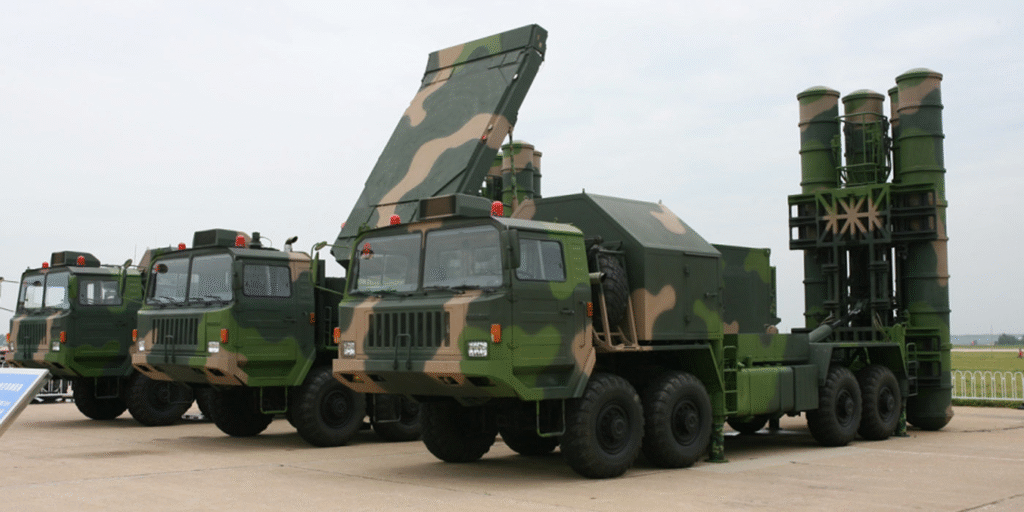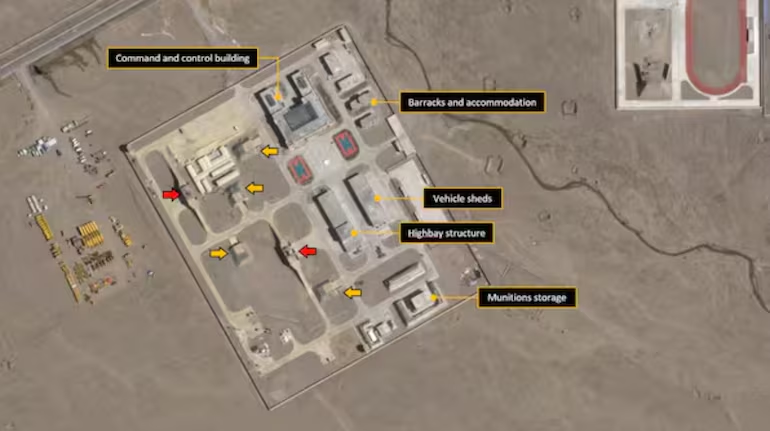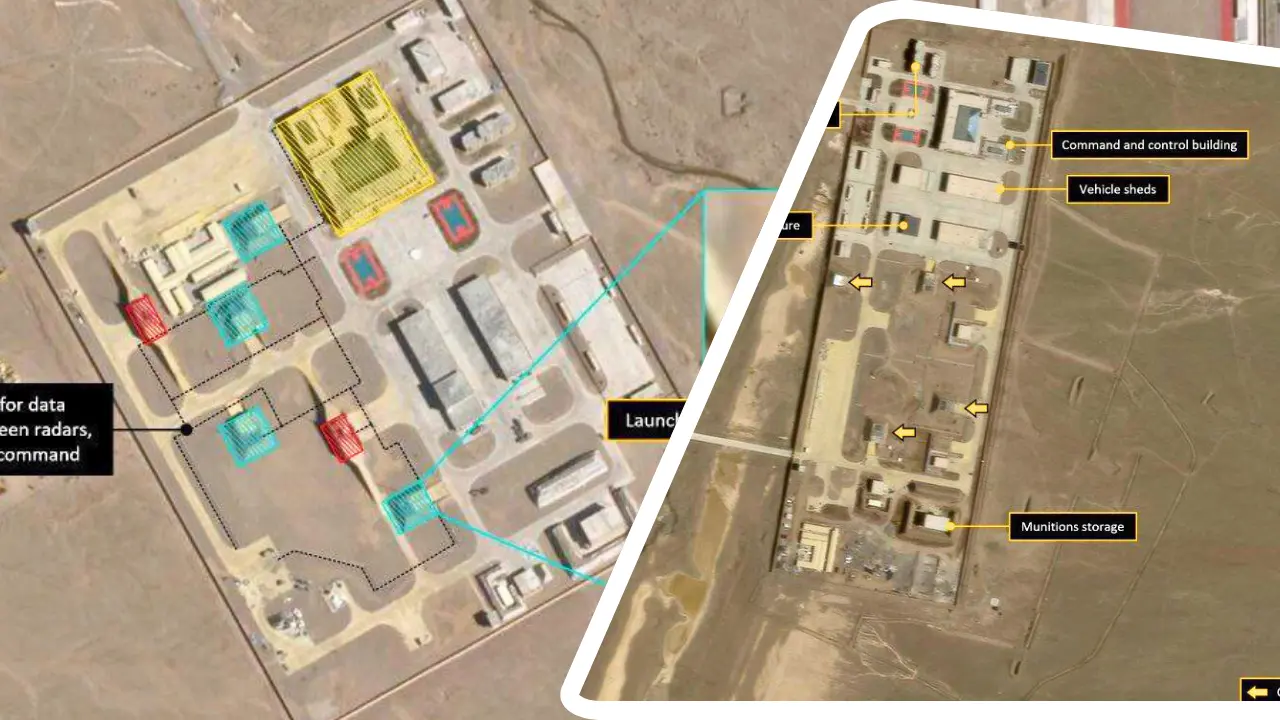A seismic shift in the strategic military landscape along the Line of Actual Control (LAC) has been confirmed, with new satellite imagery exposing an unprecedented construction effort by China near the sensitive border region. Beijing is rapidly developing a sophisticated, hardened air-defence complex on the eastern banks of Pangong Lake in Tibet, a move that starkly reverses recent diplomatic efforts toward de-escalation.
This complex, located approximately 110 kilometers from the flashpoint of the 2020 Galwan Valley clashes, is more than just a typical base; it represents a new class of military fortification aimed at achieving concealed, long-term strategic dominance in the high-altitude theatre. The construction is in full swing, encompassing barracks, command and control buildings, vehicle sheds, munition storage, and radar positions.
The urgency of this development underscores China’s intent to permanently consolidate its gains and bolster its defensive—and offensive—capabilities against India.
The Arsenal of Concealment: Covered Missile Shelters
The most alarming detail, as identified by geo-intelligence analysts from firms like AllSource Analysis and confirmed by independent satellite intelligence from Vantor, is the presence of specialized missile launch infrastructure.

The core of the complex consists of a series of covered missile launch positions equipped with retractable or sliding roofs. This unique architectural design is specifically engineered to serve multiple strategic purposes:
- Protection for TELs: The bays are designed to house Transporter Erector Launcher (TEL) vehicles, which carry, elevate, and fire missiles. These hardened structures shield the high-value systems from aerial surveillance and potential pre-emptive strikes.
- Operational Secrecy: The retractable roofs allow the TEL vehicles, believed to carry China’s long-range HQ-9 Surface-to-Air Missile (SAM) systems, to remain fully concealed until the moment of launch. This configuration dramatically reduces the opportunity for adversaries to detect their presence or pinpoint their exact location, ensuring tactical surprise and enhancing survivability.
- Rapid Deployment: The design allows for immediate launch readiness, contrasting with exposed missile batteries that must be erected and prepared in the open, making them vulnerable.
This specific, protected launch configuration mirrors facilities China has previously built on its disputed islands in the South China Sea, signaling a transfer of advanced fortification strategy to the Himalayan frontier.
Strategic Mirroring: The Nyoma Airfield Counter
The threat is compounded by the existence of a parallel Chinese facility—a virtual replica—at Gar County. This location is particularly significant:
- It lies roughly 65 kilometers from the LAC.
- It is positioned directly opposite India’s recently upgraded Nyoma airfield.
The Mudh airfield at Nyoma, strategically located at 13,710 feet, recently underwent a substantial upgrade by the Border Roads Organisation (BRO) to enhance India’s air-power projection in Eastern Ladakh. By building a mirror SAM complex at Gar County, Beijing is implementing a clear, calculated strategy to challenge India’s newly boosted air capabilities.
The deployment of long-range SAM systems, specifically the HQ-9—which is modeled on Russia’s S-300 and features sophisticated radar tracking and guidance—enhances the People’s Liberation Army’s (PLA) ability to implement an Anti-Access/Area Denial (A2/AD) bubble over key segments of the LAC, including India’s forward air deployment zones.

Furthermore, analysts point to the placement of wired data connection infrastructure within the complex. This detail indicates that the HQ-9 components—including its radars and missile batteries—are being integrated into a unified, resilient command-and-control network, demonstrating a high level of operational sophistication.
A Systemic Threat: Linking the LAC to Nuclear Expansion
The construction drive along the border is not merely a localized defensive measure; it is intrinsically linked to China’s overarching and accelerating military modernization goals. This infrastructure expansion along the LAC must be viewed in the context of China’s missile program, which is experiencing an exponential growth rate.
Also Read: India Mega-Dam Plan in Arunachal Pradesh Stirs Tribal Resistance Amid China Water Fears
According to recent assessments, the United States Department of Defense (DoD) projects that China will possess more than 1,000 nuclear warheads by 2030. This target signals a dramatic shift away from Beijing’s historical policy of maintaining a minimal nuclear deterrent.
Key indicators of this broader strategic expansion include:
- New Missile Bases: Construction progress has been observed at major new facilities, such as the one at Golmud.
- Advanced Missile Systems: The Golmud base is believed likely to house the DF-26 missile. This intermediate-range ballistic missile is dual-capable, meaning it can carry both nuclear and conventional warheads, with a formidable range of up to 4,000 kilometers.
- Operational Mobility: Satellite observations at the Golmud site show rapid progress on multiple interconnected launch zones, typical of road-mobile missile brigades, emphasizing the principles of mobility and survivability. Analysts estimate the base could host anywhere from 24 to 36 missile launchers, suggesting a high-capacity deployment strategy.
The PLA’s simultaneous focus on hardening its conventional air-defence on the LAC and aggressively expanding its strategic nuclear forces confirms a unified, long-term plan to reshape the regional military balance and enhance its coercive leverage against India.
The Spiritual Dimension: The Path to Lasting Peace
Amidst the LAC escalation, Sant Rampal Ji Maharaj teaches that true peace comes from inner discipline and purposeful dialogue, not just military might. This need for restraint over retaliation mirrors the balanced path of Satgyan. True protection is found in spiritual wealth (Naam Dhan), achieved through true worship. His teachings, which offer a path to inner transformation and lasting peace, are available on the Satlok Ashram YouTube channel.
Reshaping the Geopolitical Horizon
China’s rapid, concealed deployment of HQ-9 missile infrastructure near Pangong Lake and opposite Nyoma airfield, twinned with its explosive nuclear arsenal expansion toward 1,000 warheads, fundamentally changes the strategic dynamic along the Himalayan border. This construction provides the PLA with unprecedented levels of protection, concealment, and operational readiness for critical air-defence assets in the high-altitude region.
The move highlights a concerted effort to mitigate India’s strategic advantages, forcing a reassessment of defense preparedness and deterrence strategy in New Delhi as the volatile border transforms into a permanently fortified front.
Short FAQs on LAC Missile Site
1. Where’s the New Base Located?
Pangong Lake (East Bank), 110 km from the 2020 clash site.
2. What Missile is Hidden There?
The protected shelters likely conceal HQ-9 Surface-to-Air Missile (SAM) systems on Transporter Erector Launchers (TELs).
3. Why is Gar County a Threat to India?
A replica site at Gar County, 65 km from the LAC, is directly opposite India’s upgraded Nyoma airfield, posing a strategic counter-measure.
4. What’s the Point of the Retractable Roofs?
They provide concealment and protection for the high-value missile systems, allowing launch readiness while maintaining secrecy and survivability.
5. What’s the Bigger China Strategy?
The LAC build-up is part of a larger push for military dominance, aligning with projections that China will possess over 1,000 nuclear warheads by 2030 and deploy advanced missiles like the DF-26.

















